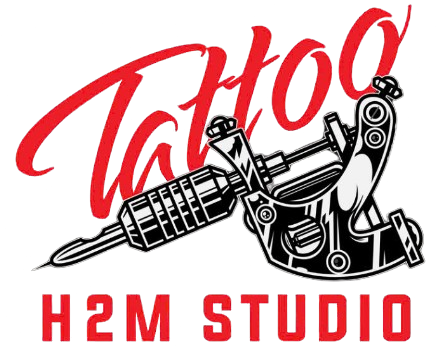One of the most important rules after getting a tattoo is to never apply sunscreen to the healing skin. However, many new tattooists believe that sunscreen will help protect the tattoo from the harmful effects of sunlight and keep the color longer. In fact, this is a common mistake that dermatologists and artists at H2M Tattoo Studio often warn about: using sunscreen too soon can irritate the skin, slow down the healing process and even cause unwanted complications. In this article, H2M Tattoo Studio will explain can you put sunscreen on a healing tattoo, and suggest safe ways to help you both keep the beautiful color and ensure the tattoo recovers perfectly.
Why Tattoo Aftercare and Sun Protection Matter
When you get a tattoo, the process creates thousands of tiny wounds in your skin as needles deposit ink into the dermis layer. This essentially creates an open wound that requires careful healing to prevent infection and ensure proper ink retention. During this vulnerable period, your skin's natural barrier function is compromised, making it more susceptible to irritation, infection, and chemical sensitivity.
The tattoo healing process involves complex cellular regeneration where your body works to repair the damaged tissue while encapsulating the tattoo pigment. Any interference with this natural process can lead to poor healing outcomes, including fading, scarring, or infection.
UV radiation is one of the greatest threats to tattoo vibrancy and skin health. UV rays break down tattoo pigments over time, causing colors to fade and lose their original intensity. However, the timing and method of sun protection during different healing phases requires careful consideration.
Protecting your tattoo from sun damage isn't just about preserving colors—it's about maintaining the health of the skin that houses your artwork. Sun-damaged skin becomes less elastic, more prone to premature aging, and can develop texture changes that affect how your tattoo appears over time.
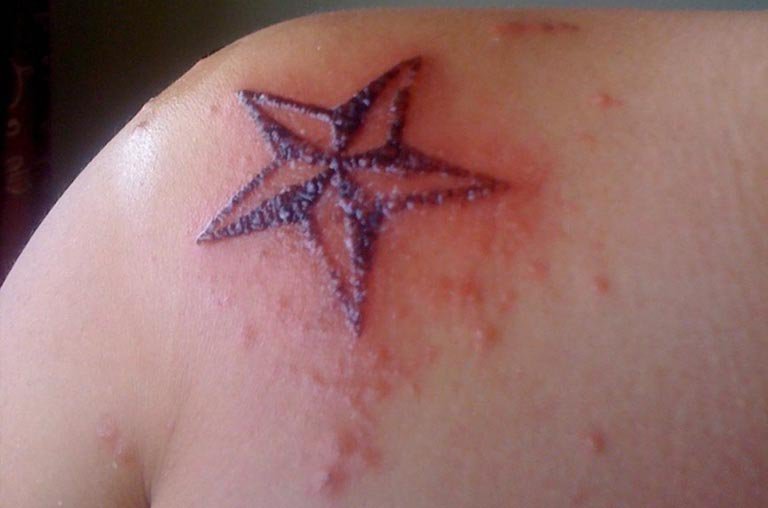
>>>> READ MORE: can i drink beer after a tattoo ? Important Things You Need To Know
What is the tattoo healing process like?
The Key Phases of Tattoo Healing
The tattoo healing process occurs in several distinct phases, each with unique characteristics and vulnerabilities:
Phase 1: Inflammatory Stage (Days 1-6). During the first week, your tattoo is essentially an open wound. The skin is red, swollen, and may ooze plasma or ink. The compromised skin barrier makes it extremely vulnerable to external irritants.
Phase 2: Scabbing and Peeling (Days 7-14). As healing progresses, scabs form and the outer layer of skin begins to peel away. This phase is critical for proper ink retention, and any products that interfere with natural moisture balance can disrupt healing.
Phase 3: Deep Tissue Repair (Weeks 3-6). While the surface may appear healed, deeper skin layers are still regenerating. Complete healing can take anywhere from two to four weeks, depending on the size, location, and individual healing factors.
Phase 4: Complete Healing (6+ Weeks). Only after this extended period is the skin barrier fully restored and ready for regular skincare products, including sunscreen.
Each healing phase presents unique challenges for sunscreen application. During the inflammatory stage, the skin's pH balance is altered, making it more reactive to chemicals. The scabbing phase requires careful moisture management that sunscreen can disrupt, while deep tissue repair demands unobstructed healing processes.
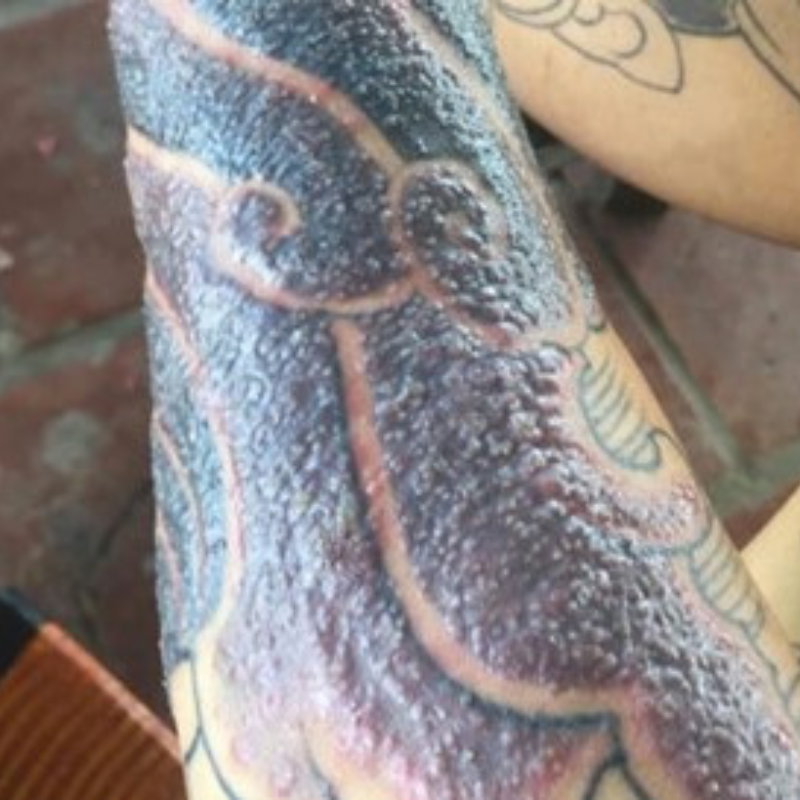
>>>> SEE MORE: vietnam tattoo recovery time line: How Fast Do They Heal While Traveling?
Why You Should NOT Put Sunscreen on a Fresh or Healing Tattoo
Dermatologists specifically recommend avoiding sunscreen application during the initial healing period for several critical reasons:
Chemical Sensitivity: Healing tattoo skin has a compromised barrier function, making it hypersensitive to the chemical filters found in many sunscreens. Ingredients like avobenzone, octinoxate, and oxybenzone can penetrate damaged skin more easily, potentially causing allergic reactions or contact dermatitis.
Moisture Imbalance: Sunscreens can create an occlusive barrier that traps moisture and heat against healing skin. This environment can promote bacterial growth and interfere with the natural drying and healing process that tattoos require.
Inflammatory Response: Many sunscreen ingredients are known skin sensitizers that can trigger inflammatory responses in compromised skin, leading to prolonged healing times and potential complications.
The risks of premature sunscreen application include:
- Allergic Reactions: Contact dermatitis from chemical filters
- Delayed Healing: Interference with natural cellular repair processes
- Infection Risk: Trapped moisture creating bacterial growth environments
- Color Distortion: Chemical reactions affecting ink appearance
- Scarring: Prolonged inflammation leading to tissue damage
Professional tattoo artists and dermatologists universally recommend avoiding all topical products except prescribed aftercare items during the initial healing period.
Recommended Healing Period Before Applying Sunscreen
The 4-6 Week Timeline
Most experts recommend waiting a minimum of 4-6 weeks before applying sunscreen to a new tattoo. However, this timeline can vary based on several factors:
- Tattoo size and complexity: Larger, more detailed tattoos may require longer healing periods
- Location on body: Areas with thinner skin or more movement heal differently
- Individual healing factors: Age, health status, and immune function affect recovery speed
- Aftercare compliance: Proper care can optimize healing timeline
Signs Your Tattoo Is Ready for Sunscreen
Before applying sunscreen, look for these indicators that healing is complete:
- No visible scabbing or peeling skin
- Skin texture returns to normal (not raised or rough)
- No tenderness when gently touching the area
- Colors appear settled and vibrant
- No signs of inflammation or irritation
Some sources suggest sunscreen may be safe once the wound closes, typically around two weeks, but waiting longer ensures complete healing.
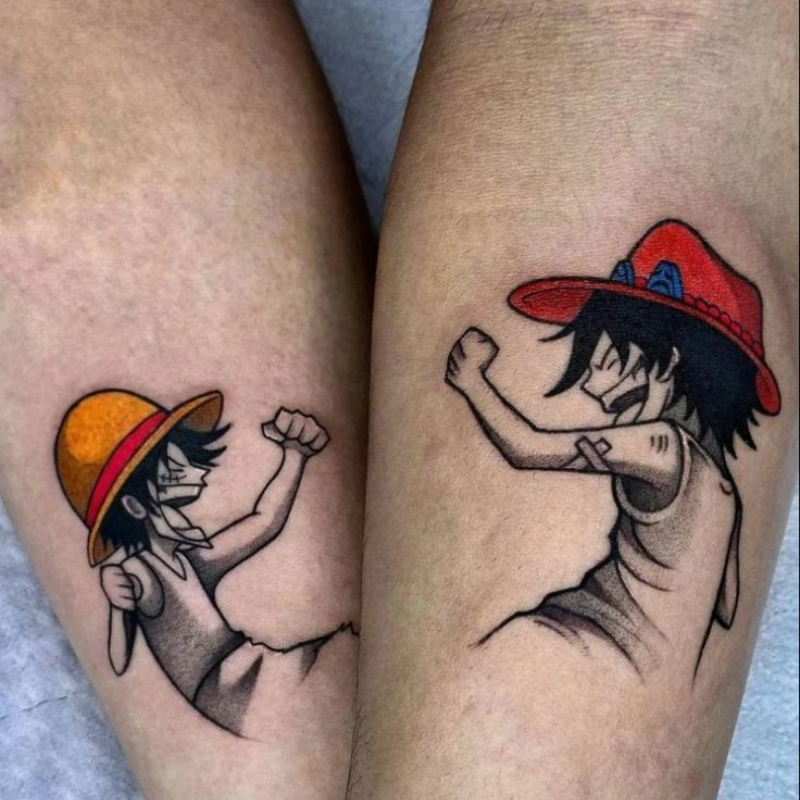
>>>> SEE MORE: What to avoid after getting a tattoo? 9 Critical Mistakes That Could Ruin Your New Ink
How to Protect a Healing Tattoo from Sun Exposure Without Sunscreen
During the critical healing period, physical barriers provide the safest sun protection:
Clothing Coverage: Loose-fitting, breathable fabrics like cotton or linen offer excellent UV protection without interfering with healing. Dark colors generally provide better UV blocking than light colors.
Strategic Shade Seeking: Plan outdoor activities to minimize direct sun exposure during peak UV hours (10 AM to 4 PM). Utilize umbrellas, canopies, or natural shade whenever possible.
Protective Bandaging: For small tattoos, breathable bandages or sterile gauze can provide temporary sun protection during unavoidable exposure. Ensure bandages don't trap moisture and change them regularly.
Professional-Recommended Techniques
Tattoo professionals often suggest these additional protection methods:
- Timing Outdoor Activities: Schedule sun exposure for early morning or late afternoon when UV intensity is lower
- Layered Protection: Combine multiple protection methods (clothing + shade + timing) for comprehensive coverage
- Breathable Barriers: Use medical-grade tape to secure lightweight fabric over the tattoo during necessary sun exposure
How to Safely Apply Sunscreen to a Tattoo
Once the healing period is complete (usually 4–6 weeks), and your skin is more closed and stable, you can start using sunscreen to protect your tattoo. Experts recommend mineral sunscreens containing zinc oxide or titanium dioxide for tattoo protection, as these sit on the skin surface and physically block UV rays rather than penetrating the skin.
Optimal Sunscreen Characteristics:
- SPF 30 or Higher: Professional recommendations specify SPF 30 or higher for adequate protection
- Broad Spectrum: Protection against both UVA and UVB rays
- Mineral-Based: Zinc oxide and titanium dioxide are gentler on sensitive tattooed skin
- Fragrance-Free: Reduces risk of skin irritation
- Water-Resistant: Maintains protection during sweating or swimming
Proper Application Technique
Once your tattoo is fully healed:
- Pre-Application Timing: Apply sunscreen 30 minutes before sun exposure to allow proper absorption and barrier formation
- Generous Coverage: Use approximately 1/4 teaspoon for each tattooed area
- Gentle Application: Pat sunscreen onto the tattoo rather than rubbing vigorously
- Complete Coverage: Ensure all tattooed areas receive even protection
- Regular Reapplication: Reapply at least every two hours, or more frequently after swimming or sweating.
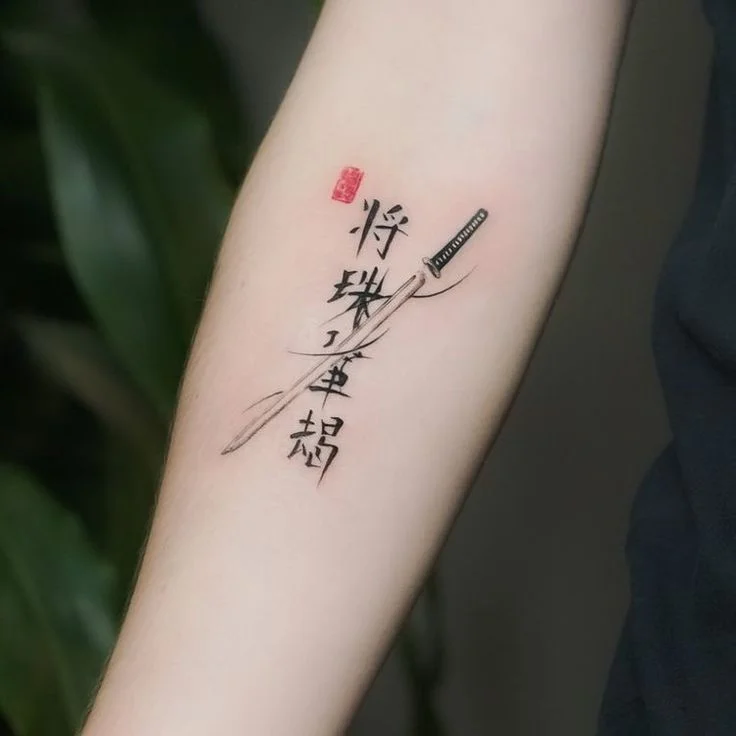
What to Do If You Accidentally Applied Sunscreen to a Healing Tattoo
If you've already applied sunscreen to a healing tattoo, don't panic. Take these immediate steps:
- Gentle Removal: Rinse the area with lukewarm water and mild, fragrance-free soap
- Pat Dry: Avoid rubbing; gently pat the area dry with a clean towel
- Monitor for Reactions: Watch for signs of irritation, excessive redness, or allergic response
- Return to Aftercare Routine: Resume your prescribed aftercare regimen
- Consult Professionals: Contact your tattoo artist or dermatologist if irritation persists
So, can you put sunscreen on a healing tattoo? The definitive answer is no—wait until your tattoo is completely healed before applying any sunscreen products. At H2M Tattoo Studio, we emphasize that protecting your investment starts with proper healing, not immediate chemical protection. While the temptation to shield your new artwork with sunscreen is understandable, patience during the 4-6 week healing period, combined with smart physical protection strategies, will ensure your tattoo heals beautifully and remains vibrant for decades to come.
>>>> NOTE NOW:

